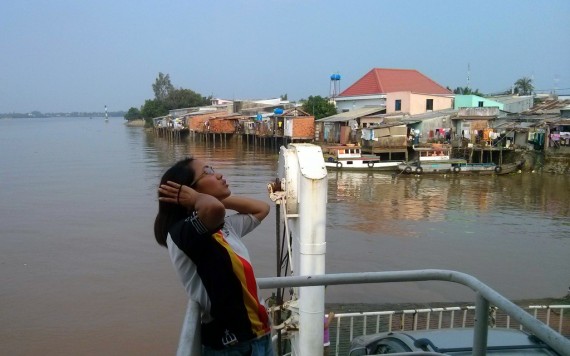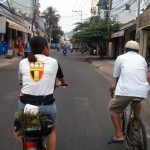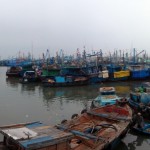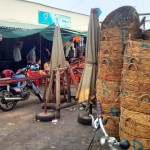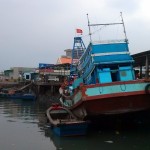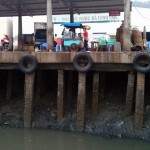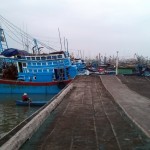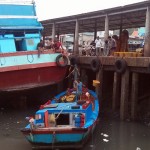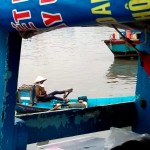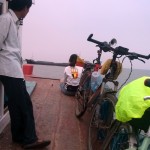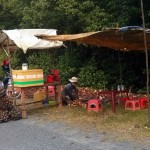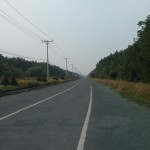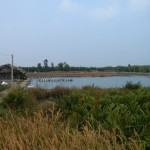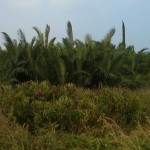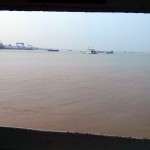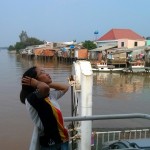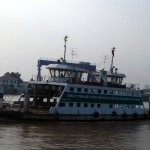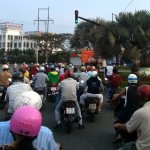This section from Vung Tau to Sai Gon is the twenty-seventh instalment of my bicycle ride from Yunnan to Cambodia – if all goes according to plan. Titled “Slap the Belgian!”, it is simultaneously published on Crazyguyonabike.com, where you’ll find a map with the itinerary and many other bicycle diaries by me and others. I hope you’ll enjoy.
Getting into our out of a major city always requires some planning. Last time, I left Saigon by looping out through the south, avoiding the spaghetti of roads on all other ends. This time, we will choose to come in from the south again.
The options are legion: direct fast ferry to Saigon. 250.000 VND pp and 50.000 VND per bike. Too expensive, too fast, too modern. Another option is a ferry to My Tho (apparently, according to another crazy guy). A lot cheaper, but My Tho is 100 km away from Saigon. Too far. A ferry to Co Gong is another option, but then you kind of have to take the dusty QL50 into town.

So we stick with crossing to the suburban town of Can Gio. It’s only 70 km away from the town centre, has a large stretch of natural reserve. We hope the road is good and that there’s plenty to see. Our wishes will only half come true.
We didn’t get up in time to catch the first ferry and, even if we did, we might still have missed it because the ferry port is slightly elusive. Normally, we’d have to find the boat in district 6, but because of low water levels, we’re now being redirected to phuong 5, also called Ben Da. A nice man on an old racing bike shows us the way.
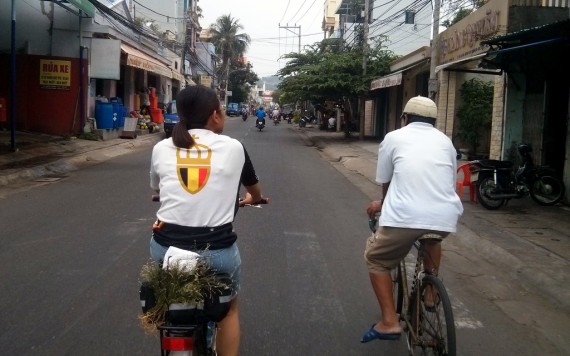
We get in at 8.30 and are told to come back at 10. So we head out for pho, fruit and coffee and some reading. At 9.45, we’re back and we buy our tickets. 90.000 for two people and two bikes, and then some carrying-bikes-across-the-gangplank tax of 20.000, which is really a rip-off.
You ought to refuse to pay it, and avoid it altogether by making the moderately dangerous walk yourself. This is what a passenger told us after we’d paid, but he had been afraid to speak up while the tattooed tax collector was within hearing. He’s apparently a bit of a gangster.
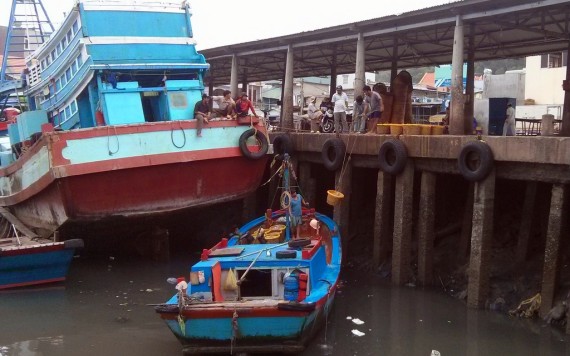
The boat doesn’t leave until well past 11, because they’re waiting for high tide to take off. Everyone else is hanging in hammocks dangling from the low ceiling on deck, and buying food off clever hawkers that climb on board from their small rowing boats below.
We pass the time by watching life in the port go its way. It’s a terribly smelly port, with garbage bobbing around in the thick ash-grey soup that is the seawater underneath our hull. We’re much surprised to see someone jump off a boat and into this porridge, apparently to wash himself.
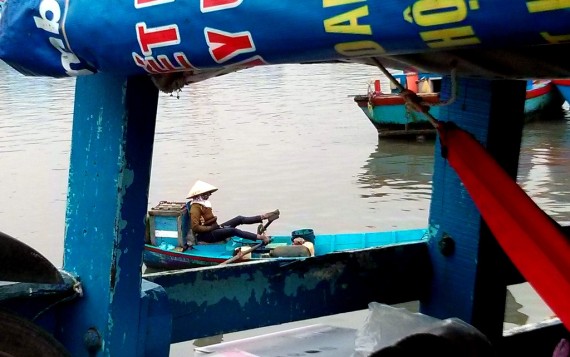
When the boat finally undocks, we begin our journey to the other side, which takes about 1h20 minutes to complete. During most of the journey, nothing of interest happens, so we just get sunburnt and watching massive boats toil by.
The other side isn’t very impressive. A few buildings, a road and that’s it. Another spoke pops with a metallic ploink. We lick the salt off our sweaty lips and head straight out, hoping to find some food on the way.
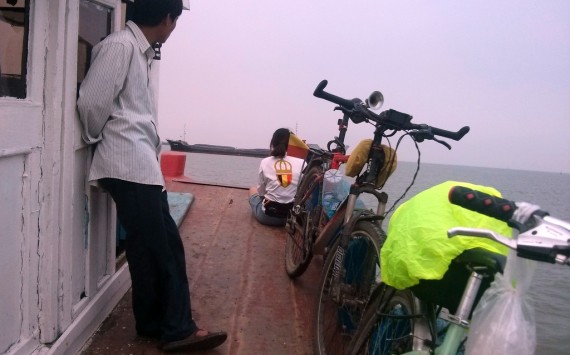
We get food from a Styrofoam box: banh cuon again, with pork sausage and a herbal garden to boot. We consume it with a coke. Everything here is expensive. We’ll learn later that this area doesn’t have fresh water, because it’s almost entirely built on a briny marsh, hence the prices.
Once on the way, we’re disappointed to find out that the natural reserve isn’t much to look at. Perhaps if you got off your bike and ventured between the trees, mangroves and high grasses, you could see monkeys and all kinds of strange birds, but here, from the three-lane traffic-free road, it’s the most boring piece I’ve ever ridden.
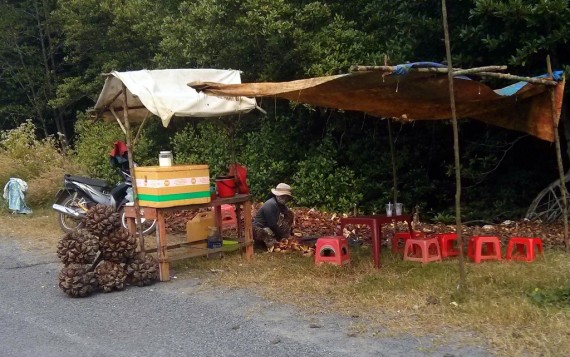
The most interesting thing we see is a bridge and a bus commuting between the ferry and the resort at Can Thanh. The road is slightly coarse but we most of all wonder why there’s a thirty-kilometre long three-lane highway with absolutely no traffic on it. Funnily enough, there are plenty of restaurants and places to drink on the way. We wonder who patronises these.
Then we finally arrive at the Binh Khanh car ferry. Tickets cost only 2000 VND a piece and once we reach the other side, we find ourselves riding straight into the maddening Saigon traffic. We’re suddenly going a lot faster, which always happens when you’re riding in the city. With the help of Google Maps, we find our way to my friend’s home near the airport and celebrate our first victory with an extensive meal!
